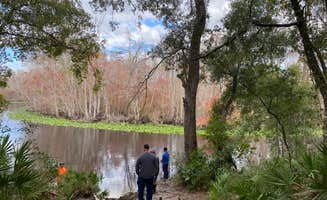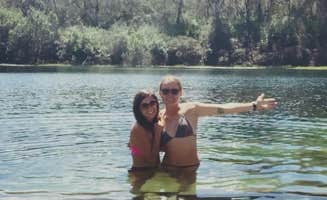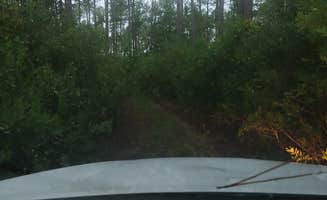Dispersed camping near Salt Springs, Florida within Ocala National Forest consists primarily of undeveloped sites with limited access roads. The forest has a subtropical climate with hot, humid summers and mild winters, receiving approximately 50 inches of rain annually with most falling between June and September. Narrow forest roads often restrict vehicle access to smaller cars, trucks, and tent campers seeking primitive outdoor experiences.
What to do
Stargazing opportunities: At St. Johns River Dispersed Spot, the tree canopy opens up near the river for stellar night sky viewing. "The trees open up so you get a great view of the stars," reports camper Mike D., who also notes that "roads to get here are bumpy."
Swimming in natural waterways: Forest creeks provide cooling relief during hot months. A camper at Freak Creek Dispersed Camping mentions "a nice creek area where you can swim and or fish if you have the right equipment to get back there." Access requires proper vehicle preparation as "the water crossing was over my bumper on my lifted Mojave."
Hiking historical trails: Beyond the popular Davenport Landing Trail, visitors can explore unmarked paths with appropriate navigation tools. At Blue Sink, camper Destiny R. describes it as "the most beautiful place to stumble upon," though notes "you may need ATV or creative backpacking to get there now. The Forestry Service recently chopped down trees and covered the easy access roads."
What campers like
Secluded campsites: Trout Lake Primitive Sites offers privacy within the forest. One reviewer describes them as "nice secluded sites" with "main road entry is packed dirt; smaller access road to sites is two-track about 1/4 mile through woods — very narrow tree clearance."
River access for paddling: Many sites provide water access for kayaking, though often with challenging entry points. Adamm A. notes that Freak Creek is "super secluded and quiet" and a "great place to put a kayak in the water," though advises against bringing larger vehicles as "sites are primitive. I would not attempt bringing a camper unless it's really small."
Forest shade: The forest canopy provides natural cooling during hot Florida days. At Davenport Landing, David P. found a "big open spot" despite the challenging approach, noting the "last 100 yards driving back in were very bumpy but no problem with our van."
What you should know
Vehicle clearance limitations: Many sites require high-clearance or four-wheel drive vehicles. At Blue Sink, forest management practices have further complicated access as "the Forestry Service recently chopped down trees and covered the easy access roads."
Safety considerations: Some campgrounds have reported safety concerns. Campers should research current conditions before visiting and always inform others of their plans. One visitor to Davenport Landing observed "some permanent party there seemed like 2 dudes in a truck with a big tent mad sketchy looking."
Tree clearance for vehicles: Forest roads often have tight passages between trees. The reviewer at Trout Lake Primitive Sites reports "very narrow trails" and warns "you will leave with some new pinstripes," further specifying they "just barely scraped a FWD Promaster through the trees."
Tips for camping with families
Site selection priorities: Choose areas with adequate space for multiple tents and easy water access. Ethan B. reported about Davenport Landing: "We didn't see anything bad with this place when we were there. Had no one around and nice and cool in the forest."
Weather preparedness: Pack extra clothing and shelter options for Florida's unpredictable rainfall patterns. The sandy-silt soil in many areas becomes problematic after rain, creating challenging muddy conditions.
Wildlife awareness: Teach children proper food storage and waste disposal practices. According to Joe P. at Trout Lake Primitive Sites, access is "very narrow trails but really easy access," making the site potentially suitable for families with appropriate vehicles.
Tips from RVers
Size restrictions: Only small trailers or campervans should attempt accessing most dispersed sites. David P. indicated that at Davenport Landing, the bumpy approach might be manageable for vans but questioned "not sure about a larger RV."
Alternative camping options: Larger rigs should consider established campgrounds with designated sites. At Lake Dorr, access difficulties include problematic terrain as campers are advised to "avoid north part of Ron Paul Drive. You'll either get stuck in sand or have issues to low/tight trees."
Cell service limitations: Connectivity is minimal throughout the forest. The Trout Lake Primitive Sites visitor noted "poor cell service even with booster. Plan on returning after antenna upgrade," suggesting preparations for offline navigation and emergency communications.




